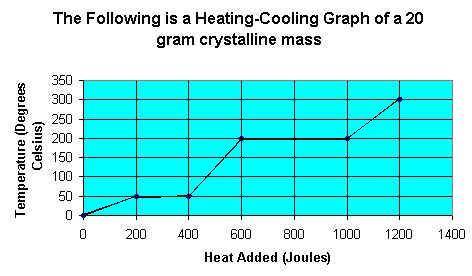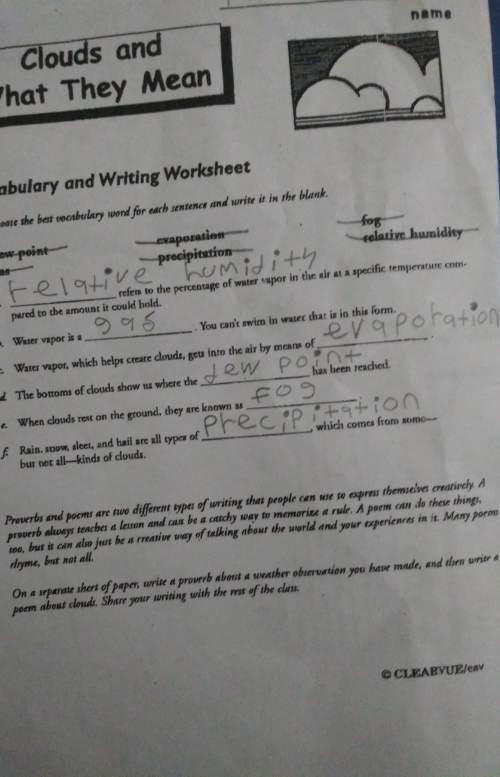What is the specific heat of the solid phase?
...

Answers: 2


Another question on Physics

Physics, 22.06.2019 06:30
5submission this assignment is worth 20 points total. you are required to submit the following by next lab: 1. (3 points) determine the equation for the output angular velocity ω2 = θ˙ 2 as a function of θ1, ω1 = θ˙ 1 and α. you must show all your work to receive credit. 2. (2 points) use the result of problem#1 to plot ω2 over 0 ≤ θ1 ≤ 360deg with ω1 = 360deg/sec. do this for α = {10,30}deg. show the results on the same plot and properly label the axes, title, legend. for this you can use matlab or ms excel. 3. (3 points) determine the equation for the output angular acceleration ω˙ 2 and create a plot similar to the one in problem#2. 4. (10 points) submit plots of the results (ω2 and ω˙ 2) obtained from creo/mechanism and compare them to results of problem#2 and problem#3. note that you should do these comparisons for the two cases with α = {10,30}deg. 5. (2 points) provide a brief explanation of the results. did they match? what are the implications as misalignment angle increases?
Answers: 3

Physics, 22.06.2019 07:30
Some material consisting of a collection of microscopic objects is kept at a high temperature. a photon detector capable of detecting photon energies from infrared through ultraviolet observes photons emitted with energies of 0.3 ev, 0.5 ev, 0.8 ev, 2.0ev, 2.5ev, and 2.8ev. these are the only photon energies observed. (a) draw and label a possible energy-level diagram for one of the microscopic objects, which has four bound states. on the diagram, indicate the transitions corresponding to the emitted photons. explain briefly. (b) would a spring–mass model be a good model for these microscopic objects? why or why not? (c) the material is now cooled down to a very low temperature, and the photon detector stops detecting photon emissions. next, a beam of light with a continuous range of energies from infrared through ultraviolet shines on the material, and the photon detector observes the beam of light after it passes through the material. what photon energies in this beam of light are observed to be significantly reduced in intensity (“dark absorption lines”)? explain briefly.
Answers: 3

Physics, 22.06.2019 08:00
1.what is where an object is located 2. what is how fast an objects speed is changing 3. what is how fast an object is moving
Answers: 1

Physics, 22.06.2019 12:00
In a set amount of time, a battery supplies 25j of energy to an electric circuit that includes two different loads. one of the loads produces 10 j of heat energy during this time interval. how much heat energy is produced by the second load in this time? explain your answer
Answers: 3
You know the right answer?
Questions

Arts, 28.08.2019 19:30



English, 28.08.2019 19:30


Computers and Technology, 28.08.2019 19:30

Business, 28.08.2019 19:30

English, 28.08.2019 19:30


Mathematics, 28.08.2019 19:30

Mathematics, 28.08.2019 19:30


Mathematics, 28.08.2019 19:30



Mathematics, 28.08.2019 19:30








